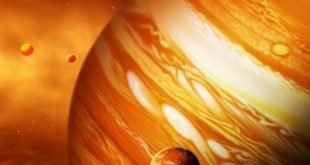 According to experts, nature often provides elegant solutions to everyday problems
According to experts, nature often provides elegant solutions to everyday problems
Chemists from Harvard University have created an unusual adhesive that sticks to wet surfaces and allows you to glue almost any tissue of the human body, including damaged heart muscle.
“Nature often provides us with elegant solutions to everyday problems. The main thing is to understand where to find these solutions and how they can be seen in the background of everything else. We are delighted that this technology, the founder of which was inspired by the humble snail could be the basis for new methods of treatment of wounds and surgical operations,” says Donald Ingber (Donald Ingber) from Harvard University (USA).
One of the main problems for surgeons in the operating rooms and military on the battlefield is that all existing methods of stop of bleeding and elimination of the RAS have major disadvantages. For example, stitching the wound with surgical thread requires a large amount of time, and the usual superglue, the most convenient and reliable means for gluing wounds is very toxic and fragile material.
In recent years, scientists have high hopes for synthetic analogues of glue shells with which they attach to the rocks. This substance works well under water, but his strength was too small to glue the torn cartilage, ligaments, muscles and other organs.
On average, the “shellfish glue” and similar adhesives are safe for the body, keep the adhesive surface is about 80-100 times worse than cartilage and connective tissue. This makes such compositions are absolutely useless for operations, as they glued the wound or the bone will be permanently open or break when making sudden movements.
Such considerations compelled the David Mooney (David Mooney) and his colleagues to look for other ways to create a new version of biological superglue that is compatible with living tissues and thus has high strength, and ability to tolerate repeated bending and stretching.
The solution to this problem was found by scientists within the land slug Arion subfuscus, living in the forests and fields of Western and Central Europe. This slug, as they say chemists make a particular adhesive substance that is not soluble in water and adheres well to most surfaces even wet leaves, mushrooms, and soil. Similar to superglue helps the slug to survive as the predators simply can’t unstick it from the surface to which it clung.
This glue, as they say scientists, is composed of many long protein chains, negatively charged, as well as numerous short protein molecules, positively charged and connecting the long links.
Following this idea, scientists have created synthetic analog of the bioadhesive using alginate, long sugar fibers extracted from algae, hydrogel based on them and a set of positively charged molecules and ions, the fastener threads.
The patch or the patch from this material, says Mooney, is attached to the surface of the skin and other tissues of the body in three different ways, forming the strong covalent bonds and relatively weak ionic and hydrogen bonds. The strength of these ties, according to the researchers, was higher than the same parameter for the ligaments and cartilage.
Filament alginate in this case, perform multiple roles — they are involved in the formation of a solid relationship and dissipate energy when stretching or compressing the patch or the adhesive surface. Thanks to them, as shown by the experiments of scientists like the patch can be stretched to 14 times and not damage it, which distinguishes a similar glue from cyanoacrylate conventional and safer analogues.
His work at Harvard chemists have tested in a variety of conditions, gluing the torn muscles of rats, the skin of pigs, but also taped the hole in the still beating heart of a pig, through which scientists pumped blood for several tens of minutes. Further experiments showed that such patches do not cause irritation, necrosis and other adverse effects when they are implanted inside the body for several weeks.
This material, as scientists assume, can be used for other purposes — create a “sticky” robots and special capsules that could be attached to certain points inside the body and gradually release the medicine.
© 2017, paradox. All rights reserved.




